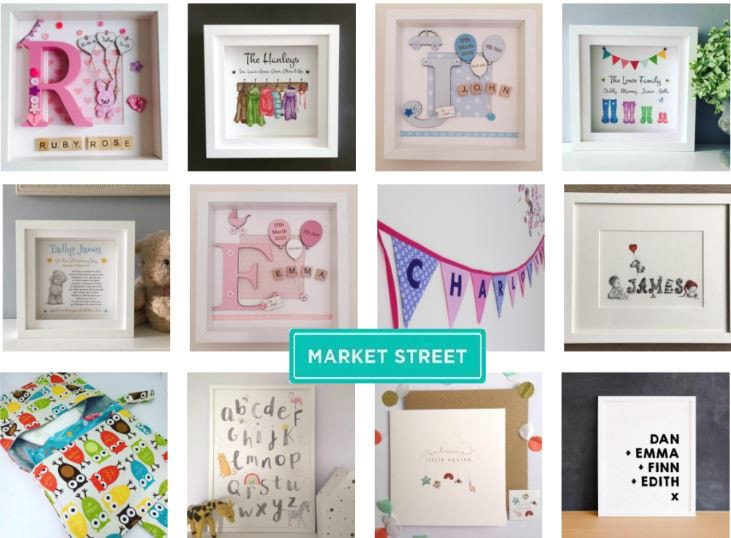The very best Way to Personalised Baby Gifts
페이지 정보

본문
4. Snake Plant: Also known as mother-in-law's tongue, the snake plant is a hardy, low-maintenance plant that thrives in bright, indirect light. Its upright, sword-like leaves make it a striking addition to any indoor space.
One of the most famous examples of Stuart garden design is the gardens at Versailles, which were designed by the renowned landscape architect André Le Nôtre. These gardens were laid out in a series of formal patterns, with grand avenues leading to ornate fountains and Personalised gifts statues. The gardens at Versailles set a new standard for garden design in Europe, and their influence can still be seen in many British gardens today.
Not only do houseplants improve air quality, but they also have a positive impact on our mental health and well-being. Studies have shown that being in the presence of plants can reduce stress and anxiety, improve mood and increase productivity. The simple act of caring for a plant can also provide a sense of purpose and fulfilment, as well as a connection to nature in our often busy and technology-driven world. By creating an indoor green oasis with houseplants, you can create a calm and soothing environment that promotes relaxation and mental clarity.
The Victorian era ushered in a new era of garden design, with the rise of the gardenesque style and the influence of exotic plants and materials from around the world. Victorian gardens were characterized by their eclectic mix of styles, materials, and plants, with ornate structures, intricate borders, and colourful displays. The formal bedding schemes and intricate parterres of the Victorian era reflected the opulence and grandeur of the period, with an emphasis on display and showmanship.
1. Spider mites: These tiny pests can infest tropical houseplants and cause damage to their leaves. To get rid of spider mites, you can wash your plants with a gentle soap solution, increase humidity levels, or introduce natural predators like ladybugs.
Today, garden design encompasses a wide range of styles and approaches, from traditional to contemporary, formal to informal, minimalist to maximalist. The principles of sustainability, biodiversity, and ecological sensitivity have become increasingly important in garden design, as designers seek to create landscapes that are both beautiful and environmentally friendly.
When it comes to choosing the right houseplants for your home, there are a few factors to consider. Firstly, think about the amount of natural light available in each room, as this will determine which plants will thrive in your space. Some plants, such as spider plants and peace lilies, prefer bright, indirect light, while others, like snake plants and ZZ plants, can tolerate lower light conditions. It's also important to consider the humidity levels in your home, as some plants, such as ferns and orchids, thrive in more humid environments.
Today, garden design in Britain continues to evolve, with a growing emphasis on sustainability, biodiversity, and the integration of technology into garden spaces. Urban gardening has become increasingly popular in recent years, as city dwellers seek to reconnect with nature and create green spaces in their communities.
Garden design has been an integral part of human culture for centuries, reflecting the values, aesthetics, and aspirations of different societies. The history of garden design is a fascinating journey through time, showcasing the evolution of styles, techniques, and trends. From the formal gardens of ancient civilizations to the picturesque landscapes of the Romantic era, the art of garden design has continually evolved to suit the needs and tastes of each era.
Another key factor to consider when choosing houseplants is the amount of care and maintenance they require. If you have a busy schedule or are new to plant care, opt for low-maintenance plants that require minimal watering and attention, such as pothos, succulents and cacti. On the other hand, if you enjoy tending to your plants and have the time to dedicate to their care, you may prefer more high-maintenance plants that require regular watering, pruning and fertilising, such as orchids, fiddle-leaf figs and peace lilies.
Another factor to consider is the level of humidity in your home. Many houseplants, especially tropical varieties, thrive in humid environments. If your home tends to be on the dry side, you may want to consider investing in a humidifier or grouping your plants together to create a mini greenhouse effect.
4. Increased productivity: Having plants in your workspace has been shown to increase productivity and creativity. Plants can help create a more relaxed and inviting environment, leading to better focus and motivation.
One of the key benefits of having houseplants in our homes is their ability to improve air quality. Plants naturally remove toxins from the air through a process called photosynthesis, where they take in carbon dioxide and release oxygen. This can help to reduce the levels of harmful chemicals such as formaldehyde, benzene and trichloroethylene, which are commonly found in indoor environments due to household products and pollution. By having a variety of houseplants in your home, you can create a healthier and cleaner living space for you and your family.
- 이전글Fissaggio pannelli fotovoltaici, strutture e supporti impianti solari 24.09.28
- 다음글토토사이트 【먹튀센터】 메이저사이트 먹튀검증 TOP 6 카지노꽁머니 24.09.28
댓글목록
등록된 댓글이 없습니다.


